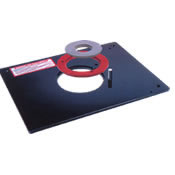wizer
Established Member
- Joined
- 3 Mar 2005
- Messages
- 15,589
- Reaction score
- 1
Hi Guys
i would like to make some shelf brackets out of oak. This is the sort of thing

I'm a bit confused as to how I am going to fit them to the wall. It seems in the above pic that a plate is screwed to the wall and then the bracket slots into dowels? Is this an easy option?
Any advice here would be appreciated.
TIA
i would like to make some shelf brackets out of oak. This is the sort of thing

I'm a bit confused as to how I am going to fit them to the wall. It seems in the above pic that a plate is screwed to the wall and then the bracket slots into dowels? Is this an easy option?
Any advice here would be appreciated.
TIA





